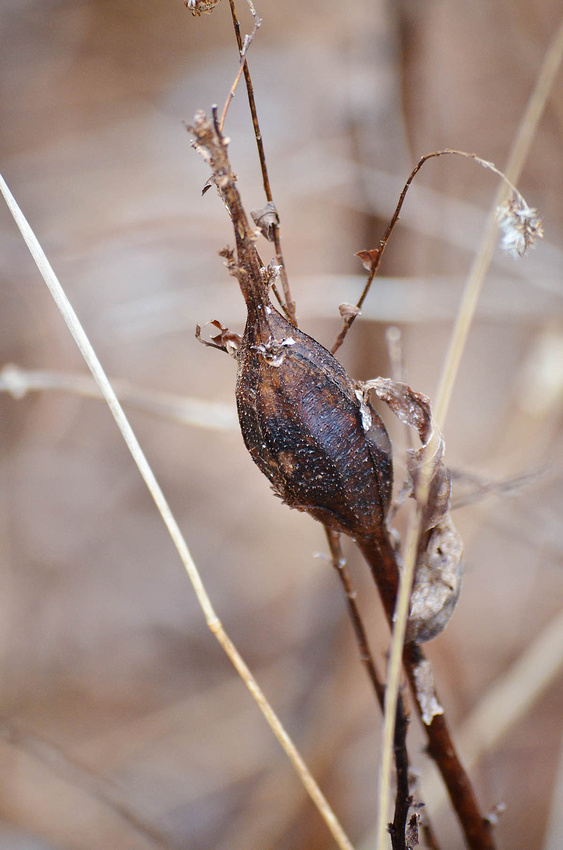A lot of gall
 Goldenrod gall
Goldenrod gall
If you spend any time hiking through overgrown, weedy fields after the frosts have laid claim to most of the leaves, you're bound to notice swellings on the goldenrod stems. These are called galls, and they're a kind of plant tumor made in respond to certain insects, chiefly flies and moths, that lay their eggs in the stems. The resulting swelling acts as a shelter for the insect larva, which feeds on the tissue and gains a measure of protection from many predators. In the case of this goldenrod, the gall insect inside is most often the maggot of a fly called Eurosta solidaginis (the goldenrod genus is Solidago, and the larva is quite remarkable, in that it is filled with an antifreeze that protects it from frostbite through the winter. Come spring, if it somehow manages to avoid the attention of woodpeckers, who are quite adept at excavating the maggot from its temporary home, the fly will tunnel out and fly away in search of a mate... and another goldenrod to continue the process.